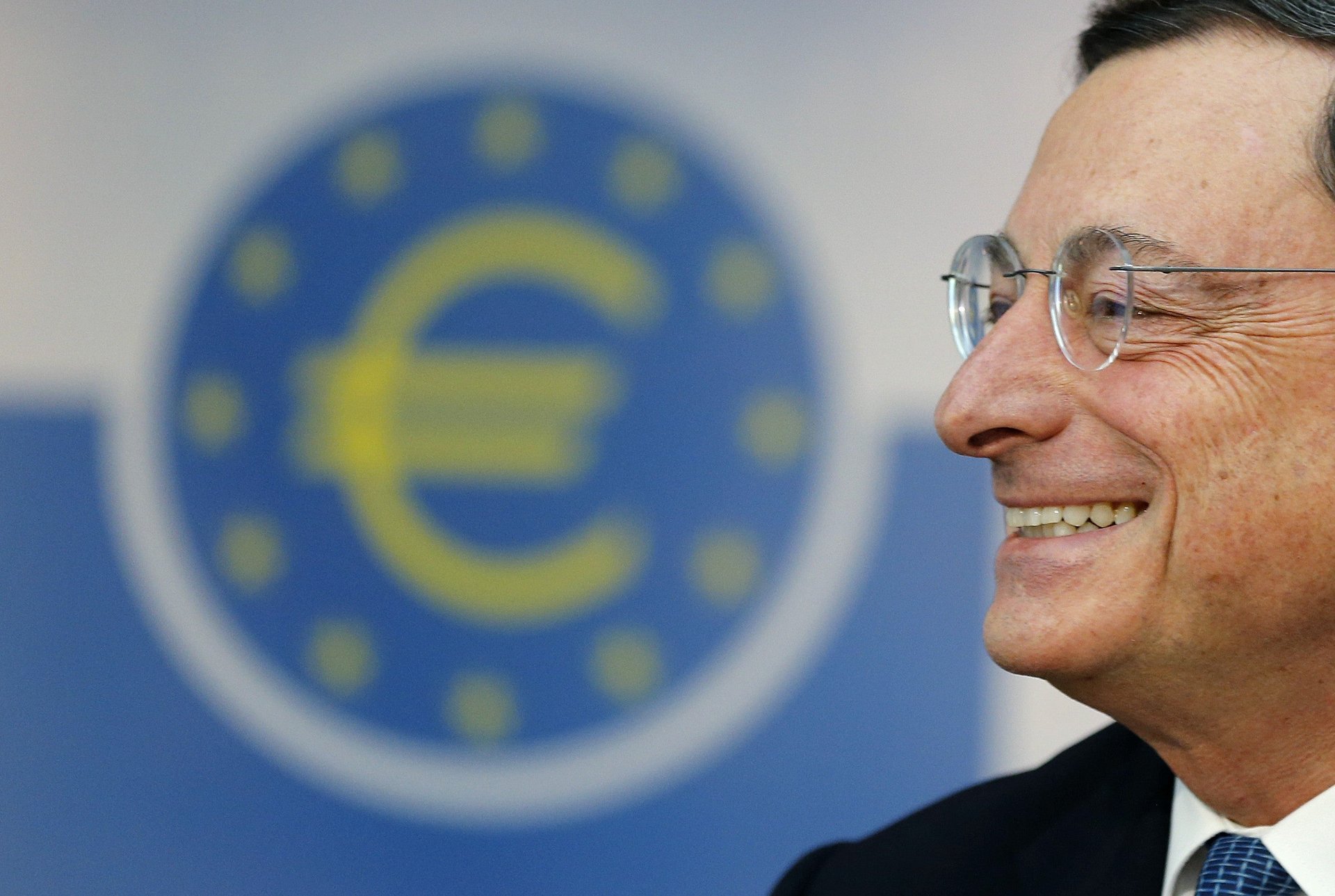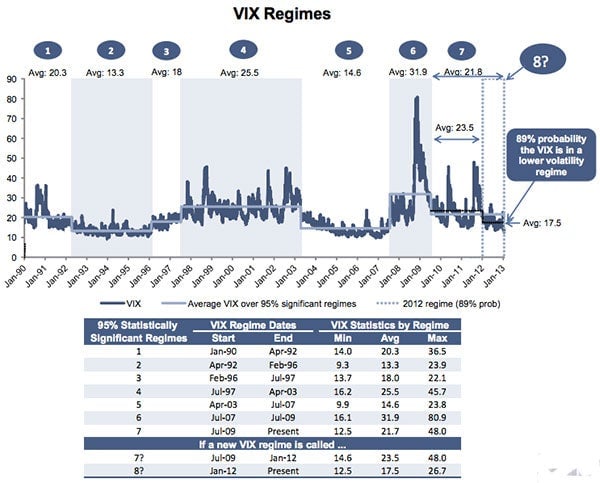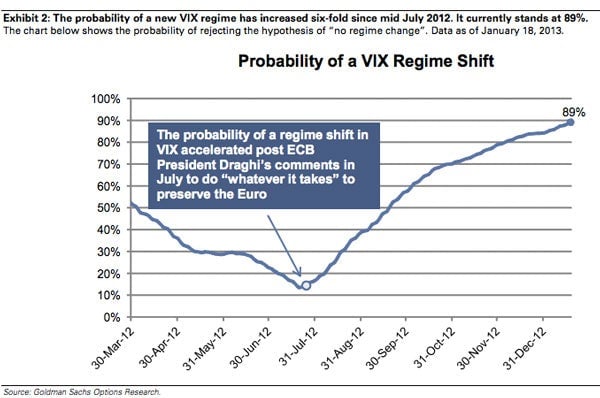The speech that saved global markets, perhaps for years to come
Rarely has one sentence from one man done so much to calm so many.


Rarely has one sentence from one man done so much to calm so many.
It was akin to John F. Kennedy asking Americans to “ask not what your country can do for you” or Winston Churchill’s “There is no such thing as a good tax.”
The moment came July 26 of last year in a speech made by the president of the European Central Bank (ECB), Mario Draghi, at an investment conference in London. In the speech, Draghi said:
The ECB is ready to do whatever it takes to preserve the euro.
And just like that, the mood in the global financial markets changed. Stocks rallied. The euro rallied. Interest rates fell for all the weak European states. And perhaps most importantly, volatility started to fall shortly after this speech, a trajectory it has continued, albeit with some setbacks, all through the year.
Now as we have just started a new year, the VIX-index, known as “the fear index,” has fallen to multi-year lows and the market seems to be in a state of calm. The VIX-index measures the prices investors pay for insurance on stocks, known as stock options. Investors typically use these to protect a stock portfolio against extreme fluctuations. The price for such a protection has fallen dramatically.
Meanwhile, both Italy and Spain are now able to fund themselves at much lower rates and the euro has strengthened significantly. Meanwhile, the stock market is at levels not seen since before the financial crisis.
This “new” market, where a sense of calm persists, all seem to have started at that exact moment Mario Draghi made his bold statement.
Goldman Sachs does not think this low volatility market is a short-term event. It thinks it’s the start of a multi-year, low-volatility market, according to a recent report:
[Goldman’s] model currently assigns an 89% probability that the VIX has shifted into an even lower gear, and is currently transitioning into its 8th regime characterized by lower volatility levels.
The bank recently published a massive report on the state of volatility in the markets, and it thinks that this precise moment was the start of the eighth period of market calm since 1990.
These are the seven periods of calmer markets in the past 23 years:

This is the exact moment that Goldman Sachs thinks the probability of this being another calm market period started to increase:

Goldman Sachs is making a big call here. The post-2008 financial crisis market, with massive and sometimes unpredictable moves, had almost become the new norm. And now, the old norm is making a comeback.
In the words of Goldman Sachs:
While much has been written on the imbalances which led to the ‘Great Recession’ and the unprecedented volatility levels reached, understanding the common post-crisis volatility patterns can have strong implications for volatility investors. The VIX averaged 17.8 in 2012, on par with 2007 levels, and has averaged 13.7 in the early stages of 2013, similar to the average level from January 2004 through mid-2007. The VIX transition from the Great Recession to the Great Compression has been a long, slow healing process, and the number one question we have gotten from investors in 2013 has been: ‘Is the VIX shifting into a lower vol regime?’ The short answer: The statistics say YES.
If Goldman Sachs is right, and this really is a new market, this could mean we are heading for some very stable years in the stock market.
Most of the charts and market data point to that exact moment when Draghi made his speech as the time the crisis peaked. Then it all started to change. That’s no coincidence.